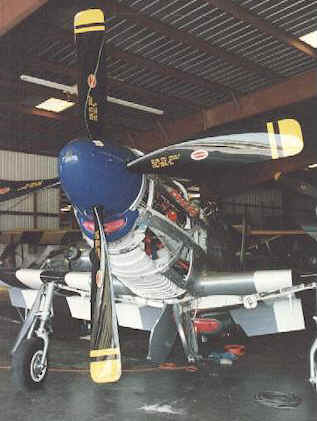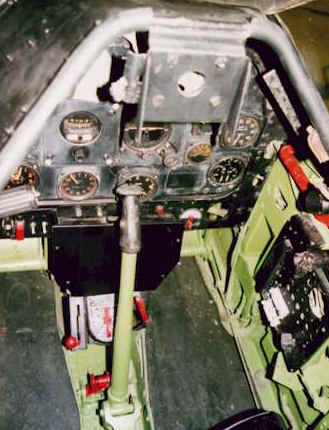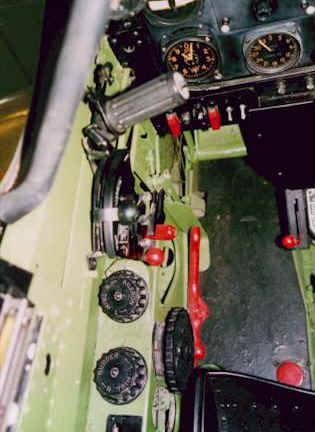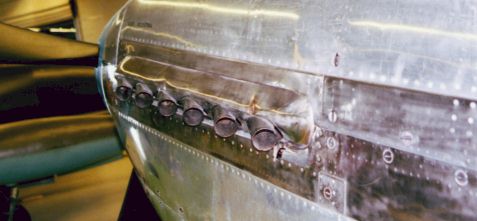by Bryan Ribbans
Caution. This page might take a while to load. It contains a number of pictures that we wanted to reproduce at the highest practicable quality. The pictures will look best if your video card is configured to handle 16-bit color.
About the Mustang
Much has been already written on these pages about P-51 Mustang, so I will skip the background information. The development history of P-51D can be found in the previously published Modeller’s Guide to Late P-51 Mustang Variants by Joe Baugher.
This walkaround of the P-51D ”bubbletop” Mustang concludes the wide coverage of the type that readers of this publication undoubtedly noticed during recent months.
Nowadays a bubbletop Mustang is the most widely preserved warbird, and it is fairly easy to encounter P-51Ds at airshows, at least here in the UK. I had an opportunity to photograph several preserved – and flying – machines at Duxford. Some additional photos from Magnus Fridsell (via Martin Waligorski) show the P-51D on display at the Swedish AF Museum in Linköping, Sweden.
Contents
This fairly large set of photographs has been divided into sections below.
Preserved P-51s
This is resident at Tom Reilly’s Aviation restoration facility based in Kissimmee, Orlando, Florida and is kept in flying condition. It is immaculate, however, I am not sure if the colour scheme is authentic. I don’t think so. Photo: Bryan Ribbans
Old Crow still belongs to Clarence E. ”Bud” Anderson, a pilot who originally flew seveeral Mustangs with this name. Bud is a wartime ace who flew with the 357th Fighter Group, 8th Air Force at Leiston Field. Photo: Bryan Ribbans
At the same airshow were a rare collection of other P-51D’s; Old Crow, Candyman-Moose, Double Trouble Two and Sunny VIII – shown here – were all there and together they flew in formation to make the largest assembly of P-51’s in Europe since the end of World War II. Each aircraft had been finished to a very high realistic standard and it was a sight to behold. The noise level was deafening (lovely!). Photo: Bryan Ribbans
Double Trouble Two. The characteristic dark engine cowling panel below the exhausts is quite noticeable. Photo: Bryan Ribbans
VF-R , a P-51D serial no. 44-74008 is owned by Intrepid Aviation in North Weald, UK.
Photo: Bryan Ribbans
Candyman-Moose is operated by The Fighter Collection at Duxford.
Photo: Bryan Ribbans
Here is a Ding – Hao taxying along the perimeter track at Duxford during an airshow; note the position of the flaps, elevators and all the underneath fairings and vents. Just the stuff for diorama’s. Photo: Bryan Ribbans
Port side view of ’Ding – Hao’. This is another lucky chance… walking around Duxford one afternoon, ’Ding – Hao’ was rolled out of the paint shop for the very first time – right in front of me! I thought it was my birthday… 🙂 As you can see, it has been finished very realistically as the overall paint finish is semi-matt and the hues and tones of the colors used are superbly close to the original. I could not personally fault this finish. Photo: Bryan Ribbans
Engine Installation
The Merlin Engine
 This aircraft is based at Reilly’s and again is a flyer. This picture offers a good view of the Hamilton paddle-blade propeller of the P-51D. The propeller cuffs, widely used on Merlin-powered Mustangs during their operational use, are not present here.
This aircraft is based at Reilly’s and again is a flyer. This picture offers a good view of the Hamilton paddle-blade propeller of the P-51D. The propeller cuffs, widely used on Merlin-powered Mustangs during their operational use, are not present here.
Photo: Bryan Ribbans
With the cowling panels removed one can see that, although all the bits are there, the colors of the engine, acsessories and fitings are spurious to original wartime finish. However, these close-up views allow all the engineering to be shown clearlly. Photo: Bryan Ribbans
The removed bottom cowling panel reveals the carburettor air duct.
Also note the multiple holes in the framework for the fasteners.
Photo: Bryan Ribbans
Port side of the engine. Once again it is all there, albeit in ’funny’ colors. I am a bit surprised that it was finished in this way but at least one can make out individual items such as the oil tank (in yellow). Photo: Bryan Ribbans
This and the following picture are the best I have ever taken of the engine bay of a P-51D – in this case of Candyman – Moose at Duxford, England. Here the colors replicate very closely the actual wartime operational finish. Just look at the mass of pipes, cables and wires! Note the paint finish on the cowling bearers. That afternoon while wandering around the place I just got lucky! In the right place at the right time. A very short while later the cowling panels were put back on and that was that…. Photo: Bryan Ribbans
Same engine from the port side. How I wish that was me in the cockpit! Photo: Bryan Ribbans
The six exhaust stacks of the shouded variety on the port side of the Swedish P-51D. The completely different shade of the metal panel surrounding the stacks is obvious. It is believed to be made of stainless steel for heat protection.
Photo: Magnus Fridsell
Top side of the cowling and a prominent panel division line down the middle.
Photo: Magnus Fridsell
Cockpit Area
Pilot’s Office
Cockpit windscreen of the Linköping’s P-51. The gunsight is deleted, and only mock seat harness are present on this static display machine. Also the cockpit interior color is spurious. Photo: Magnus Fridsell
The sliding ”bubble hood” part of the canopy. Note the pilot’s head armor and radio equipment placed behind it.
Photo: Magnus Fridsell
 Regrettably this example’s cockpit is not immaculate, as it lacks several important bits and pieces – see the empty gunsight mount at the top. On the positive side, it is also free of any modern fittings that often can be seen on the P-51s that are still flying.
Regrettably this example’s cockpit is not immaculate, as it lacks several important bits and pieces – see the empty gunsight mount at the top. On the positive side, it is also free of any modern fittings that often can be seen on the P-51s that are still flying.
Photo: Magnus Fridsell
 Left side of the cockpit with prominent throttle control lever.
Left side of the cockpit with prominent throttle control lever.
Photo: Magnus Fridsell
This photo can serve as a reference for the cockpit right inner wall structure, but most of the equipment is missing.
Photo: Magnus Fridsell
Undercarriage
A clear shot of the starboard wingroot, wheel well and main door. Note that the wheel bay has been painted white. This is probabaly to show up any oil/fluid leak quickly and is a modern trend. Operational colors were zinc chromate yellow for thw wing spar which formed the rear of the wheel bay, with the bay it self in zinc chromate green, doors silver or green, oleo legs silver. Photo: Bryan Ribbans
 Moving out to the outboard end of the port wheel well bay, this shows the under-carriage leg clearly;also note the shine on the oleo portion together with the differing sizes of brake cables running down the leg.
Moving out to the outboard end of the port wheel well bay, this shows the under-carriage leg clearly;also note the shine on the oleo portion together with the differing sizes of brake cables running down the leg.
Photo: Bryan Ribbans
A close-up of the port wheel well showing the mass of pipework herein. Note the landing light extended. Photo: Bryan Ribbans
The port wheel well again, moving further out towards the wing tip, showing clearly the extended landing light and the pipework running along the rear face of the well, which is the front face of the main wing spar. Photo: Bryan Ribbans
Rear Fuselage and Tail
Behind the Cockpit…
A three-quarter port-side shot of Ding – Hao showing the lower fairing in the open position together with the elevator balance fairing and the inboard wing flap detail. Note how the wing flap raises up to the root fairing and not as most kits would have you believe.
Other noteworthy details are: the drooped cooler outlet at the bottom and a tail wheel. Photo: Bryan Ribbans
This is the panel located just aft of the port wingroot. Note the piping in this area and again be aware that the colors shown are not nessecarily those of a war-time nature. Photo: Bryan Ribbans
Here is a rear view of Ding – Hao which repays careful study; note the cockpit canopy guide rail slot, the contours of the fuselage where the tail fairing joins it and the detail on the elevators and trim tabs. Photo: Bryan Ribbans
This last picture of our walkaround shows an often overlooked acess panel to the tail wheel mechanism, located under the port tailplane. Photo: Bryan Ribbans
This article was originally published in IPMS Stockholm Magazine in March 2000.

























